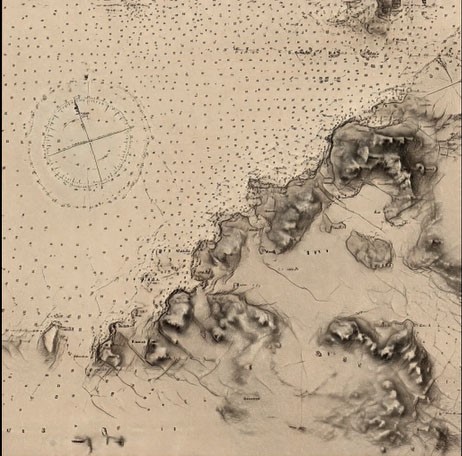Libraries and Artificial Intelligence

Lucy Dalgleish took part in the NLS-CDCS Digital Research Internship in AI. She was based in the National Library of Scotland and was funded by CDCS. Her article, below, focuses on Libraries and Artificial Intelligence
Libraries and Artificial intelligence
Artificial Intelligence (AI) is changing the information landscape and as such has the potential to have a profound impact on libraries. Indeed, AI is already becoming embedded in the daily processes of many libraries.
I recently undertook an internship, funded by the CDCS, which partnered with the National Library of Scotland (NLS) to take stock of the libraries AI projects along with documenting any opportunities and challenges employing AI tools may bring. During the internship I had the opportunity to explore both the academic and industry landscape of AI/libraries.
The academic discourse
There has been a wealth of academic publications recently on libraries and AI. Two key texts are Thomas Padilla’s internationally-focused Responsible Operations and CILIP’s UK-focused The impact of AI, machine learning, automation and robotics on the information professions, are in consensus concerning their recommendations for libraries. Their key findings are that it is a responsibility of libraries to keep up-to-date with AI (partly as it is inescapable) and that any AI implementation discussions should place ethics at the centre.
Both reports are clear that employing AI systems is a considerable undertaking. As Padilla notes, ‘the challenge of doing this work responsibly requires fostering organizational capacities for critical engagement, managing bias, and mitigating potential harm’. Padilla argues that AI biases cannot be eliminated, only managed through bias management activities such as training staff on possible bias and ‘embed[ing] transparency and explainability’ into AI library policy, as well as fostering ‘distributed data science fluency’ amongst staff.
How are libraries using AI?
Many of the AI projects I investigated as part of my internship took the above recommendations to heart and centred ethics in their AI application. Below are some examples of high-profile AI library projects:
Library of Congress: making archives more navigable and transparent use of AI.
Newspaper Navigator, a project commissioned by the Library of Congress (LoC), allows users to train their own AI to search an archive of digitized newspapers using image recognition technology. This not only makes the archive more navigable but also has the possibility of encouraging AI literacy in its users.
The LoC is also working to embed transparency and explainability by developing internal policy and frameworks for use of AI systems, including: a set of recommendations; a risks and benefits analysis matrix; and a data processing plan. The data processing plan is a document in which they ask vendors questions such as: where did the information in the dataset originate; what potential risks or harms could result from processing this dataset in the experiment; how has the data been compiled, when, and by whom?
Yale University Library: accessing collections as data.
Robots Reading Vogue, a project by Yale University Library, is a venture in which 400,000 pages of Vogue magazine were digitised and made machine-readable. Text-mining and topic modelling of this archive permitted researchers to visualise frequencies of topics appearing in the catalogue. The program allows users to navigate from long distance reading, graphical representations of data patterns over the years, to close reading, zooming in to the articles themselves.
The British Library: uncovering archival gems and exhibiting new works.
Living with Machines is a five-year project between The British Library (BL) and The Alan Turing Institute which was awarded £9.2 million from the UKRI’s Strategic Priorities Fund. It is an ongoing project using AI, data science and library collections to place the lives of ordinary people in the nineteenth century centre-stage. It promises to produce AI tools and software to analyse digitised collections at scale for the first time.
Further to this, BL’s exhibition, ‘Imaginary Cities’, was the Library’s first exhibition presenting AI-manipulated collections to the public. It included both artworks, original collection items and some of the lines of code used to create it.
The NLS and AI:
There are currently some 21 ongoing and completed NLS projects involving AI. The projects span from uncovering hidden patterns in their archives to transforming user experiences.
To focus in on just one area of the library, The NLS Maps Department are experimenting with utilising AI tools to help examine the digitised map collection at scale. The department have a variety of AI collaborations with institutions, masters/PhD students and other teams in the Library. These AI projects are exploring the potential of using: image recognition software to identify map features (trees, buildings, railways, roads); ML technologies to crop maps for use in georeferencing; natural language processing tools to help users search for specific street names within the collection; Handwritten Text Recognition (HTR) software to create metadata.
More than this, AI tools are not only being applied to the map collection to extract information but to examine them as creative works. Martin Disley, the Libraries Artist in residence 2020, worked with Generative Adversarial Networks (GANs), training them to look for patterns in collections of digitised images in order to create new works of art which retain traits of the initial collection. His main piece of work used thousands of the Library’s digitised maps to produce maps of a Scotland that never existed, complete with compasses pointing to a false north: this work was designed to question the ‘truth’ of the map alongside the ‘truth’ of AI technology (see Figure 1). The project was funded by the AHRC Creative Informatics project and was shortlisted for the John Byrne Award.

Figure 1 – One of Martin Disley’s GAN generated maps.




